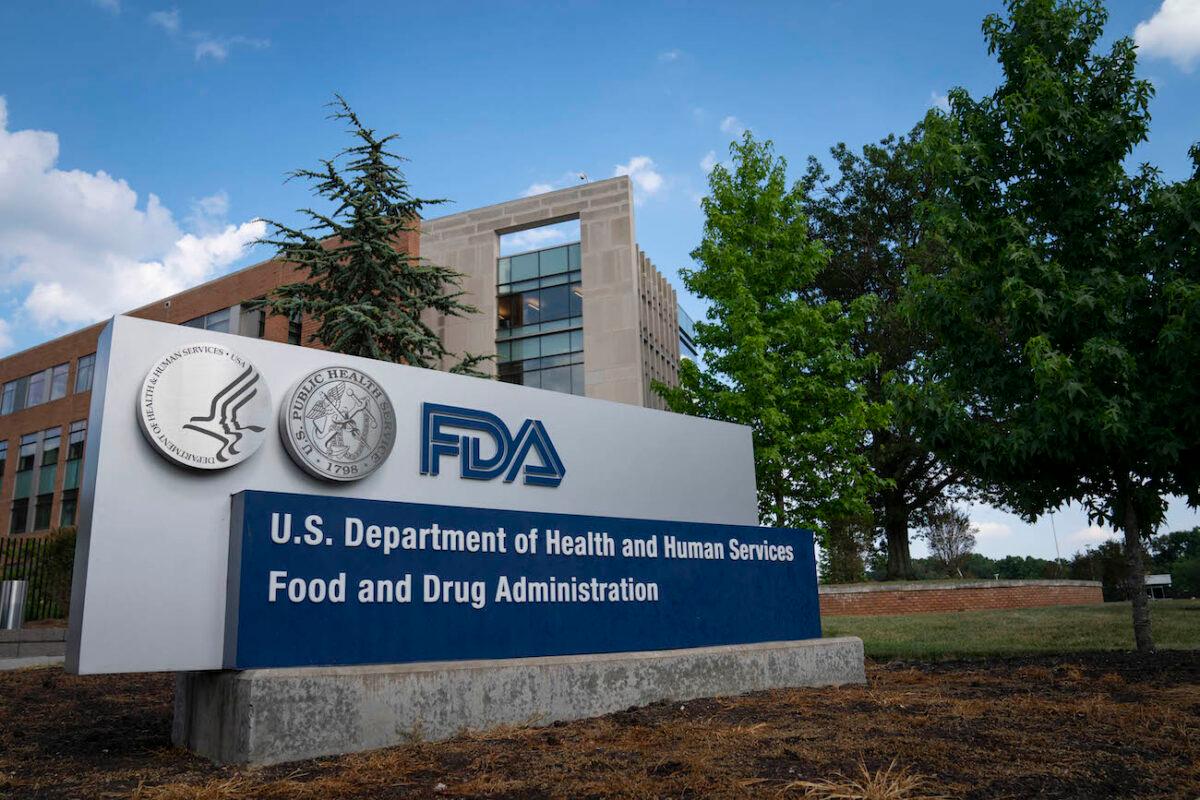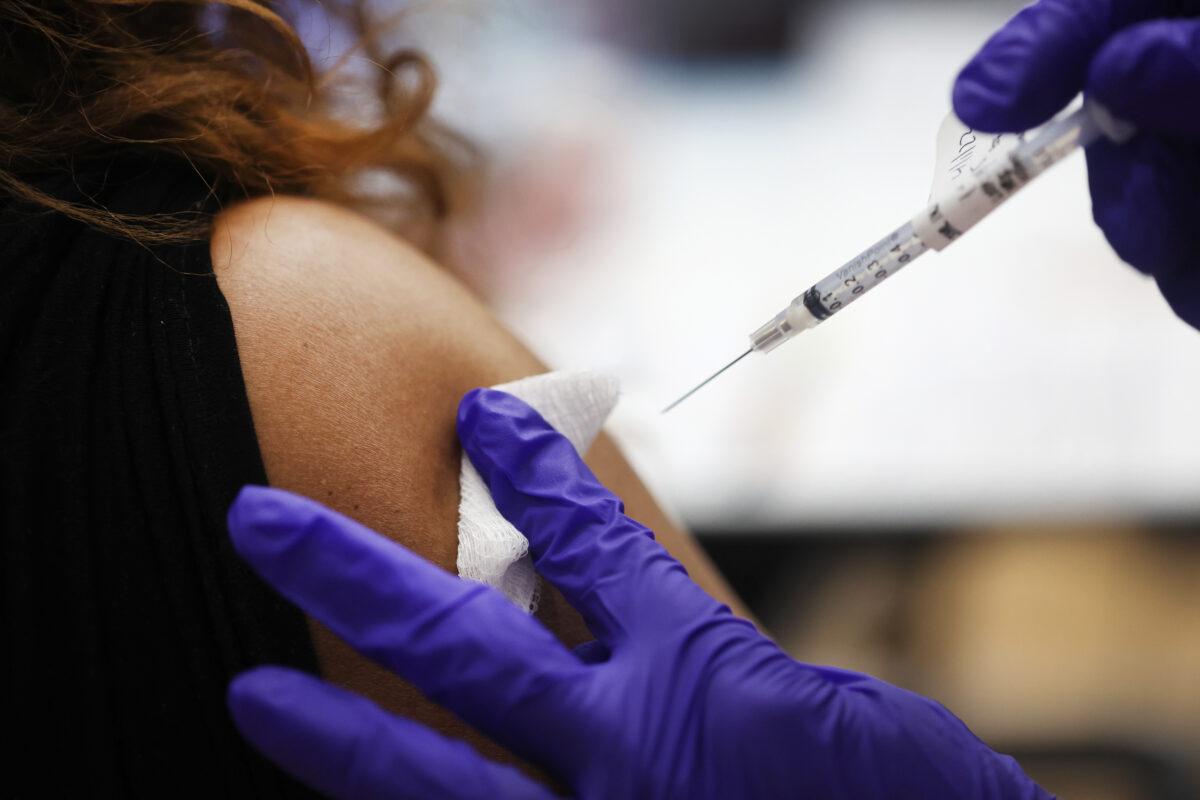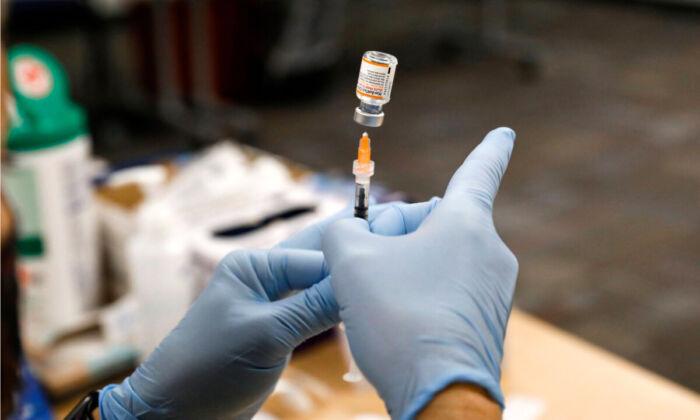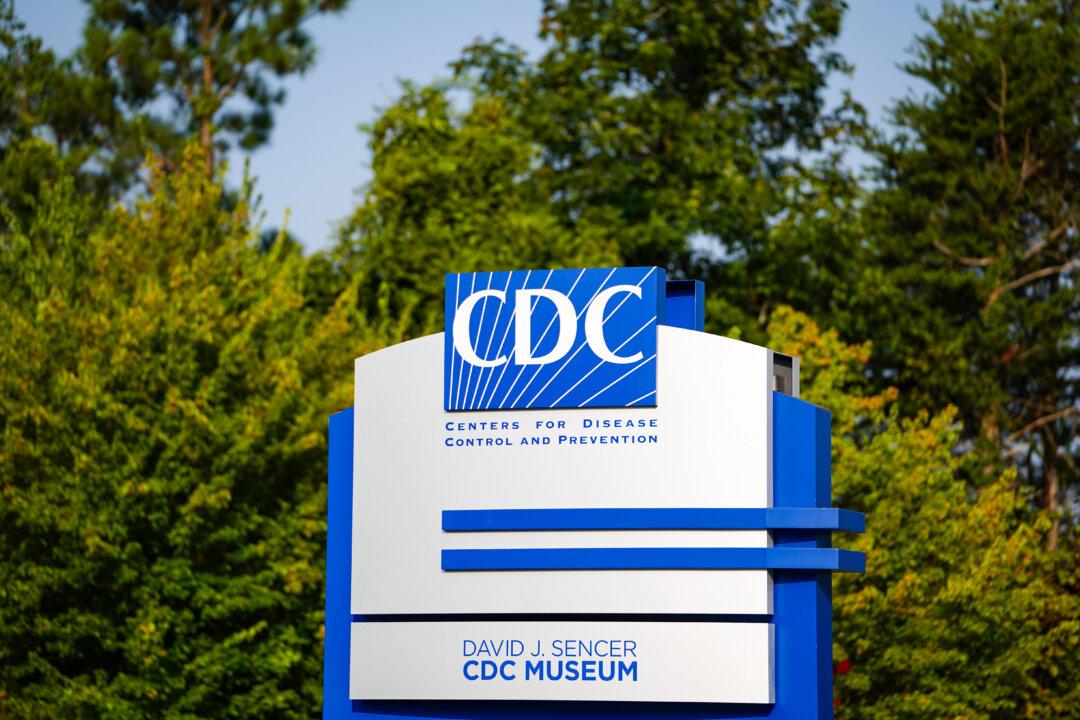An elevated rate of Bell’s palsy, a type of facial paralysis, was identified among elderly people after COVID-19 vaccination with a Pfizer booster shot, U.S. regulators said in a new study.
The “small but statistically significant elevation” was detected after vaccination with Pfizer’s old booster shot, which is no longer available in the United States, researchers with the U.S. Food and Drug Administration (FDA) said in a preprint study.
The elevated rate resulted in an adjusted incidence rate ratio of 1.13 and remained consistent when researchers adjusted for different factors, such as prior COVID-19 infection.
A rate above one shows a possible connection between the vaccine and an adverse event.
A statistically significant elevated rate for Bell’s palsy after vaccination with a Moderna COVID-19 vaccine booster wasn’t detected, although adjustments for certain factors, such as seasonality, did result in statistically significant results.
Bell’s palsy is a paralysis or weakness, typically on one side of the face. While symptoms often improve partially or fully within weeks, some people suffer longer-lasting problems. The cause of the condition is unknown, according to the U.S. National Institutes of Health.
Both messenger RNA (mRNA) vaccines can cause side effects, including a form of heart inflammation called myocarditis, U.S. authorities and other experts have acknowledged.
Pfizer and Moderna officials didn’t respond to requests for comment. Pfizer CEO Albert Bourla said during a recent appearance on CNBC that a Pfizer team constantly reviews and analyzes data and that the team hasn’t seen “a single [safety] signal.”
FDA researchers analyzed data from the U.S. Centers for Medicare and Medicaid Services, which maintains a database that includes vaccination history and adverse events for Medicare beneficiaries aged 65 and older.

The Bell’s palsy data was analyzed from Aug. 12, 2021, to May 14, 2022; the rate after vaccination was compared to the rate from before the COVID-19 pandemic.
There were 59 cases of Bell’s palsy identified after vaccination, with 29 being determined not to be an actual case after a medical record review.
The FDA stated in the Pfizer vaccine’s package insert, which was last updated in July 2022, that “currently available information is insufficient to determine a causal relationship with the vaccine.”
Increased Risk of Other Events
Government researchers in the new study found an increased rate of acute myocardial infarction, or heart attack, among the elderly after a primary series of Pfizer’s vaccine. But they said the effect lost statistical significance during adjustment.Another statistically significant elevation in rate was detected after Pfizer’s booster dose after, and not before, adjustment for factors such as the exclusion of cases with prior COVID-19.
No statistically significant elevated risk was detected for Moderna’s primary series or booster.
Fifty cases of myocardial infarction were identified through the Medicare database. After medical records were examined, 20 cases were confirmed and 21 others were deemed probable, with the rest being labeled possible.
Researchers identified an increased rate of inpatient pulmonary embolism, or blood clotting, among those who received Pfizer’s vaccine, and the statistical significance remained after adjustment.

An elevated but not statistically significant rate of blood clotting was identified for Moderna’s primary series, but a statistically significant reduction was found for Moderna’s booster, which “adds to the level of uncertainty about an increased PE risk,” the researchers said.
A total of 23 cases of pulmonary embolism were detected through the database. The results of medical record adjudication were unclear because cells were redacted to “protect patient confidentiality,” according to the FDA researchers.
An elevated rate wasn’t found for the other adverse events that were examined. They were immune thrombocytopenia, or a blood platelet disorder, for the primary series and boosters; disseminated intravascular coagulation, which causes blood clotting, for the primary series and boosters; and myocarditis and pericarditis for just the boosters. The FDA chose to combine the results of two sets of research, or one for the primary series and one for boosters, into one study.
The first study looked at data from Dec. 11, 2020, through April 16, 2021, for myocardial infarction; through April 30, 2021, for pulmonary embolism and coagulation; and through May 7, 2021, for coagulation. The second study looked at data from Aug. 12, 2021, through April 30, 2022, for infarction; through May 7, 2022, for myocarditis/pericarditis; and through May 14, 2022, for Bell’s palsy.
Kidney Injury
New Zealand authorities said they found in an analysis of health records that Pfizer’s vaccine was linked with several adverse events.Utilizing national electronic health records and studying the incidence of 12 adverse events after Pfizer vaccination in the population of those aged 5 and older, researchers identified a statistically significant increase in heart inflammation, or myocarditis and pericarditis. They also detected a statistically significant association between the Pfizer vaccine and acute kidney injury.
Like the FDA researchers, New Zealand officials used adjusted incidence rate ratios. They looked at the incidence of each adverse event in the weeks following vaccination and compared the figures to the incidence before the pandemic.
Researchers detected an increased risk of a number of conditions following vaccination, but the only statistically significant increases were for acute kidney injury and myocarditis/pericarditis, including a big jump in heart inflammation following a second dose of a Pfizer vaccine.
Consistent with other research from around the world, most cases of inflammation occurred in youths.






